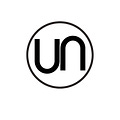Apologies in advance for the background noise impacting the sound quality of this note. There was some wind, a street performer, and an obnoxious motorcyclist as I was making this recording. Some parts might be a bit loud.
I bought a $60 shirt this week. I’ve never boughten a $60 shirt before.
Thinking about it makes me cringe. Me, Amanda, the frugal thrifter not only bought a new shirt but a $60 one at that?!
Who am I and what have I done with Amanda?
This isn’t really about who I am or who I was. It’s actually more about who I’m trying to become.
I read the book Atomic Habits by James Clear a few months ago. It radically shaped my perspective on identity. Here’s what Clear has to say:
"Whatever your identity is right now, you only believe it because you have proof of it….The more evidence you have for a belief, the more strongly you will believe it."
Basically your identity is the sum of your habits. Your habits reinforce what you already believe about yourself.
If you believe yourself to be a fit, healthy person then you will have the habits of someone who is fit and healthy. If you believe yourself to be unfit or unhealthy your habits will reflect that too.
My habits reflect someone with a scarcity mindset. And those habits create proof that reinforce this existing belief. It’s in effect a negative feedback loop.
I buy cheap clothes because I feel like I have to, not necessarily because I want to. At least not all the time.
Creating new habits, thus, isn’t just about changing what you do. It’s about changing what you believe.
My penchant for thrifting embodies two identities. One is the identity of someone who is a responsible consumer and is a good steward of the environment. The other is of someone who doesn’t have a lot of money and doesn’t believe she can buy expensive clothes.
What’s interesting about these identities is that thrifting isn’t the only way to be a responsible consumer. In fact, I would argue that buying expensive clothes is also a good way to be a responsible consumer.
When you buy durable, high-quality clothes you treat them better and they last longer. Even though there’s a higher investment up front, you actually buy less and thus spend less over time.
If you think about it buying clothes for longevity is just as practical as giving secondhand clothes new life. The outcome is still the same: consuming with intention and keeping clothes out of landfills.
When I took that $60 shirt with me into the dressing room I wasn’t just trying on a piece of clothing. I was trying on a new identity.
Buying the shirt wasn’t just a financial transaction. In some ways it was an act of self-care.
I bought it as a way to start adopting new habits around a new identity. One that comes from a place of abundance rather than scarcity and fear.
Buying that shirt was a way of telling myself that I am worthy. That I belong. And that even if I’m anxious about how I will earn money now, I am confident that the future is filled with more abundance than I could ever imagine.
Here are some questions that I think are worth noodling over. If you have a notebook grab it and jot your thoughts down:
What do your consumer habits say about your identity and mindset? Do you consume from a place of abundance or scarcity?
How would you describe your identity right now? How would you like your identity to evolve over the next year or two?
What is one action you can take that could help you embody the identity of the person you’d like to become?
James Clear uses an example of running marathons. Before you can run a marathon you have to go for a run. Before you can go for a run you have to lace up your sneakers. And before you can lace up your sneakers you first have to dig them out of your closet and put them on. It’s that initial habit that eventually gets you to the end goal you seek.
How can you turn this action into a habit?
P.S. If you’ve considered reading Atomic Habits but haven’t I hope this note will give you a nudge to do so. It’s a fantastic read. (But if you’re short on time, check out this fantastic summary).
Did you find this note thought provoking? Is there someone in your network who might find it thought provoking too? If so I’d love for you to share this with them.














Audio Note #3: What we buy represents who we are